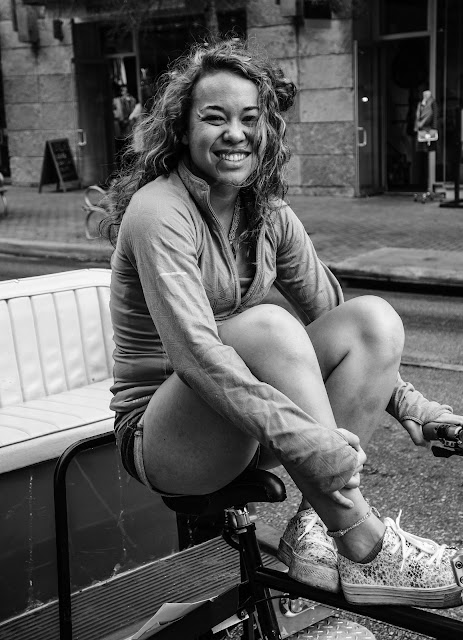I recently plunged in and researched ( a lot) about using drones in commercial photography. And when I say I researched it's not because I was trying to find the best performance or price; no, I was trying to find out what the rules, regulations and laws are regarding the use of drones to take images for commercial (money paid to me) use. And what I found out was a bit startling considering how many stories I read about professional photographers and videographers using drones in public areas.
My interest had nothing to do with me wanting to fly a drone and get a different point of view. You want a good picture of your neighborhood from the sky? Hire a helicopter. And a licensed pilot. And get an approved flight plan. That's my way of thinking. But no, I had a client who was interested in doing the drone copter thing and I wanted to come into this part of the business with my eyes wide open.
I had no desire to own or operate a Phantom or a some other brand but if I hire a sub-contractor for a project it's important to me to know what my liabilities are going to be. And my client was not a small, under the radar, sort of enterprise that was interested in flying now and asking forgiveness later. They are a large utility provider operating under a regulatory microscope.
So, here's the deal. If you are an amateur you can operate your own drone as long as you are not charging for images or imaging services. You are limited to a ceiling height of 200 feet and you must have line-of-sight on the drone at all times. There are plenty of places you can't fly your drone for issues of public safety. These include (but are not limited to) over streets, within (seriously) five miles of an airport, over public gatherings (outdoor concerts, protests, marches, races) and, while not everyone knows and abides by these rules they are in place and enforced (though enforcement is variable).
The game changes with professional use. You can fly higher but...... You need an FAA (Federal Aviation Agency) operator's license and you need an FAA exemption (form 333? for each event) in order to make any flight for commercial use. Any flight except on your own private property. But even if you are flying on private property you need to enforce a 500 foot diameter exclusion zone around your drone position to ensure public safety. While, from a copyright and privacy point of view, you are allowed to photograph people or property that is viewable from public airspace, in order to overfly private property for the purpose of commercial photographic drone-ism you MUST get signed releases or waivers from every single property owner in your flight path. The penalties are big.
The rules are still in flux but sources in counter-intelligence say that the small drones one can buy from camera stores, video dealers and online for around $1,000 are destined to be the favorite weapon of terrorists for the next ten years or more. The breaching of the White House airspace by a consumer drone (quadcopter) was a huge wake-up call for intelligence agencies and the people tasked with maintaining our national security. With cellphone control technology advances and ever shrinking bomb and nascent molecular explosives technology their biggest fear is not from a large, lone drone but a swarm of smaller, armed drones. Only one needs to get through the countermeasures to cause real damage and loss of life. Normal citizens should also fear the ability of close flying drones to carry electronics that can intrude on private information networks and capture vital personal and financial data.
The defense industry is already deep into countermeasures which might include radio white noise fields around key installations. The radio white noise kills the wi-fi connection to the drone, bringing them to ground. The Chinese military is experimenting with mid-powered, multi-spread pattern lasers to kill incoming drones but the energy consumption in mobile field applications is still problematic. An undisclosed government is experimenting with directional EMP (electro magnetic pulse) devices that would kill the silicon in the drones. I favor the fully automatic shotgun for incoming drones. The shorter barrels on the automatics give a wider spread so less range but better kill potential. How about cannons that shoot fine mesh nets into the flight space? It's all out there being worked on.
So what will the first successful terrorist drone attacks on western civilian targets mean for photographers? I think the industry that makes and markets the drones will suffer from a wide range restrictions and licensing. In popular culture I hear people flaunt the current rules all the time and usually without consequences but I think there will come a time when people will respond to the presence of drones in a very negative way and it will be very hard to successfully incorporate them into functional photographic businesses.
My point of view is that the widespread use of drones and the plummeting cost of ownership is akin to putting fully automatic weapons into the hands of children. After doing my research I am amazed that makers of drones have been allowed to mass produce and disseminate them. I think we are one horrific event away from a regulatory environment that will essentially kill this niche----and probably for very logical reasons.
While there are valid uses for drone technology there is also a very valid and long list of reasons to tightly regulate their use. Now I will duck and let the comments fly.
For a more lighthearted approach watch this trailer: https://www.youtube.com/watch?v=O1Hhvdpvp5o
And the backlash begins: http://petapixel.com/2015/06/05/1350-camera-drone-whacked-out-of-the-air-by-an-angry-neighbor/
That particular commercial drone was being operated unlawfully. /\


















































